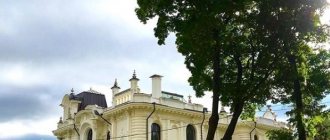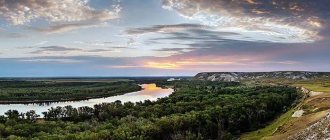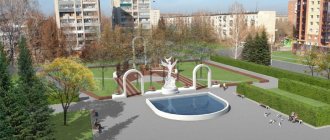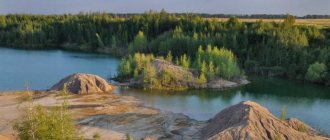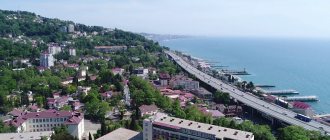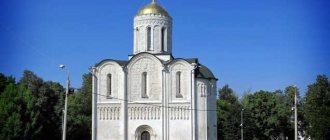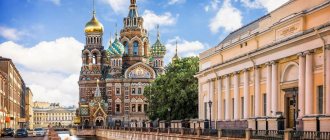The city of Perm, which is the largest industrial center of the Russian Federation in the field of mechanical engineering, is located on the coast of the Kama River, in the region of the middle Cis-Urals. It covers an area of 799.68 square meters. km near the most beautiful place where the Chusovaya River flows into the Kama.
The city has a river port on its territory and is considered a settlement of regional significance and an urban district. It is also the most important transport hub of the Trans-Siberian Railway and a diversified cultural and scientific center of the Urals.
City `s history
On the site of the modern city at the beginning of the 18th century. There was a village called Bryukhanovka. The formation of the city began with the construction of the Yegoshikha copper smelter, which was led by V.N. Tatishchev.
For the life of the plant workers, a settlement was built next to it, which later received the name Perm, which translated from the Finno-Ugric language means “distant land.” The settlement received the status of a “provincial city” by order of Catherine II in November 1780.
Closer to the beginning of the 19th century. The provincial city became the most important trading center in the Urals, in which the most popular product was salt mined in Usolye and Solikamsk.
Main achievements in the field of production and industry in Perm:
| Event | Year |
| Opening of regular navigation on the Kama. | 1846 |
| Construction of a mechanical plant where river tugs were produced. | 1858 |
| Construction of the railway through Perm. | 1878 |
| Opening of the Motovilikha Cannon Plant, which became the largest processing enterprise in the Urals. | 1863 |
In 1875, the famous 50-ton “Tsar Hammer” was manufactured at the Perm enterprise, for the project of which N.V. Vorontsov was awarded the highest award at the World Industrial Exhibition in Vienna in 1873.
Subsequently, numerous modern infrastructure was formed on the territory of Perm; the following were built here:
- gymnasiums and museums;
- schools and theological seminary;
- schools and medical institutions.
Ascension Church
The classic combination of red walls with white edging of windows and kokoshniks creates an elegant look and an easily recognizable image of one of the main architectural attractions of Perm. The temple was built at the very beginning of the 20th century. The church flourished at this same time. It suffered greatly during the revolution, turning first into a hostel and then into a bakery. When the restoration began, a project was proposed for placement in one of the aisles of the organ hall. As a result, it was moved to another room, and the temple was restored almost to its original form. Built in pseudo-Russian style, it is a bit reminiscent of the capital's Kremlin and is one of the iconic attractions that newcomers to Perm definitely recommend visiting.
What interesting things can you see in Perm
Beautiful places in Perm contribute to the active development of domestic and foreign tourism in the city and its surroundings.
According to 2022 statistics, the Perm Territory entered the TOP 10 most popular cities in Russia in the field of tourism.
The total number of visitors for the year was 92.6 thousand people who came to see local attractions from other regions of Russia and from neighboring countries.
However, according to statistics from Rosstat, based on the indicators of occupancy in the city’s hotel complexes and based on the geoanalytics indicators of cellular operators, the city was visited by almost 754 thousand people, including almost 2% of whom were foreigners.
Perm has taken an honorable tourist place among other most popular regions of the country:
- Moscow and St. Petersburg;
- Krasnodar Territory and Stavropol Territory;
- Crimean peninsula and Sverdlovsk region;
- Republic of Tatarstan and Nizhny Novgorod region;
- Moscow region.
The most numerous tourists are residents of certain regions:
- St. Petersburg and Moscow;
- Nizhny Novgorod and Kazan;
- Yekaterinburg and Udmurtia.
Gribushin House
Gribushin's house is one of the most beautiful buildings in Perm, and one of the few where the original interior of the house has been preserved. It was erected in 1895-1897. architect A. Turchevich for the official Kashperov in the Baroque style.
The merchant Gribushin bought this beautiful place and rebuilt it in the Art Nouveau style, for which reason the house began to bear his name. The facade of the house is decorated with stucco mascarons - relief images of women's faces, and the forged bars of the glass doors are made in the form of plants.
Beautiful places, nature and attractions for a photo shoot
Perm is famous for a large number of beautiful sights and places that are worth visiting when traveling to the city and its surroundings.
Kungur cave
The Kungur ice cave is considered the hallmark of the Urals.
In 2011, the Kungur Cave was included in the list of the 10 most popular and exotic caves in the world.
With a total length of the cave of 5,700 m, only 1,500 m are equipped for tourists to visit. The excursion route has been cleared and equipped with original lighting.
Along the tourist route there are 48 grottoes, 60 underground lakes and 146 “organ pipes”, the highest of which is 22 m high. The largest of the grottoes, called the “Grotto of Geographers”, has a volume of about 50 thousand m³. Almost all lakes in the Kungur Cave have connections with the Sylva River, because of this the water level in them is constantly changing.
The largest and cleanest lake is called the Great Underground Lake, the total volume of water in it is 1,300 m³, the average depth of the lake is about 3 m.
The average air temperature in the Kungur cave is around 0°C. To maintain it in winter, a freezing procedure is carried out, for which a specially made hole is opened for air circulation.
In summer, to maintain a constant temperature, the hole is closed. In the entrance grottoes of the cave the lowest air temperature, which in summer stays at around -2 or -3°C, in winter can drop to -20°C. Due to the large number of people wishing to go on an excursion to the cave, the thick layer of ice is gradually melting and multi-year ice is in danger of completely disappearing.
The most picturesque grotto in the cave is considered to be the “Diamond” grotto, which contains unique crystals that have needle and tray shapes.
Beautiful places in Perm, as a rule, have ancient origins. The age of the Kungur cave ranges from 10 thousand to 12 thousand years, but there is evidence that it continues to develop and grow today.
Plakun waterfall on Sylva
In the Cis-Ural region there are natural waterfalls, the most unique of all is called “Plakun”. It is located on the right bank of the Sylva River, near the village of Suksun. The waterfall consists of 3 powerful streams, which are formed from 2 branches rushing down from the coastal outcrop.
The approximate height from which the powerful stream rushes down with a roar is 7 m. It originates at a distance of 15 m from flowing groundwater at the junction of aquiferous sandstone and water-resistant marl.
According to the results of research by hydrogeologist L. A. Shimanovsky, the water flow in the waterfall is about 20 l/sec. Due to the huge content of carbon dioxide in the water, the waterfall does not erode the rocky cliff, but gradually cements it and forms porous calcareous tuff from the inside. Because of this, the cliff is brown in color and in some places covered with moss.
The water in the waterfall is very cold all year round and its average temperature is only +5°C. In winter, an ice dome forms around the waterfall at the top of the rock, and clusters of ice crystals hang from all the trees that drops of water reach.
The waterfall called “Plakun” was given the status of a hydrogeological natural monument of the Perm region, and a wooden chapel was erected next to it in honor of the Prophet Elijah.
Usva Pillars or Devil's Fingers
Usvinskie Pillars or Devil's Finger are located on the coast of the Usva River , at a distance of 5 km from the village of the same name. The landmark of regional importance is several kilometers long and up to 120 m high.
It is a rock mass formed over a long period of time by limestone. Here you can see imprints of ancient corals, brachiopods and numerous fossils, which confirm that in ancient times there was a sea in this place.
There are interesting tourist routes through the Usva Pillars, which can be followed at any time of the year.
All the rocks of the Usvinsky Pillars have their own names:
- Panoramic Stone;
- Big Log;
- Overhanging stone;
- Small Log;
- Muddy Stone;
- Bastion;
- Arrow Stone.
At their bases there is a huge number of caves and grottoes of various sizes.
The Devil's Finger is considered the most famous rock among the other Usvinsky Pillars. It is a 70-meter rock, separate from the main massif, located on a small base. The rock, despite its inaccessibility, is very popular among climbers.
Copan Canal
Beautiful places in Perm, which include the Kopan Canal, are objects strictly protected by the state. This is one of the most interesting attractions of the Perm region, which is located in the Ochersky district.
The Kopan Canal was dug by hand to connect the Ochera and Cheptsy rivers. The man-made canal was dug specifically to increase the volume of water in the lake of the Ochersky plant, founded in 1761 by Count Stroganov.
The canal construction project was developed by I. F. Bushuev. According to his plan, water from the upper reaches of the Chepets River was supposed to flow through an artificially formed canal into the Ocher River and subsequently fall into the Ochersky Pond.
The construction of the canal lasted almost 2 years, about 5 thousand serfs, collected from 4 volosts, worked on it:
- Putinsky;
- Verkhne-Ochersky;
- Voznesensky;
- Sepychevsky.
Excavation of the canal took place year-round, the daily norm was 6 cubic arshins of soft soil and 3 of hard soil. In total, about 400 thousand cubic meters of earth were dug and removed.
Channel parameters:
- depth 40 m;
- width 100 m;
- length 1 km.
Upon completion of the work, it turned out that the project did not live up to expectations. The volume of water in Chepts turned out to be insufficient and the water level in Ochersky Pond did not increase.
Basegi Nature Reserve
The reserve is a conservation area in the Basegi ridge area.
It occupies an area of 37,935 hectares on the area between the Vilva and Usva rivers, in the spruce-fir forest zone of the western foothills of the Middle Urals:
- Average;
- Northern;
- Southern.
The length of the territory of the Basegi mountain range is 24 km; it has predominantly mid-mountain relief on its territory with elevation changes from 600 to 900 m. The highest peak of the range is located at an altitude of 994.7 m. The lowest place is located at the mouth of the Korostelevka River at an altitude of 314 m.
The entire territory is conditionally divided into zones:
| Zones | Footprint |
| Intact indigenous forests | 15% |
| Slightly disturbed forests | 25% |
| foothill meadows | 5% |
| Deforested forests | 35% |
| Crooked forests, swamps and mountain-tundra zone | 20% |
Parks, squares
Beautiful places in Perm are often used for photo shoots and are the most popular for recreation. The city has many natural parks and public gardens where tourists and locals love to relax.
Rock Park
The well-equipped Stone Square or park, dedicated to the 250th anniversary of Perm, was founded in mid-1973. It contains a reinforced concrete stele and many large samples of rocks from the Urals. These items are exhibits of Perm State University and previously there were signs on them with the name of the type of stone.
Beautiful places in Perm certainly include city parks and public gardens.
In 2011, the square was replenished with 2 exhibits called “Perm Gates” and the sculpture “Scarab”. The Perm Gate is an art object made of spruce logs in the form of a three-dimensional letter “P” 12 meters high. An interesting sculpture is a scarab beetle, which rolls a huge round stone in front of it.
Gorky Park
The oldest Perm City Park is located in the Sverdlovsk microdistrict of the city and borders the streets:
- Komsomolsky Avenue and Revolution Square;
- Sibirskaya and Krasnov.
Rotunda in Gorky Park in Perm
Since its foundation, the park has changed its name several times:
- City or Country Garden;
- City Park named after Maxim Gorky or Red;
- Central Park of Culture and Recreation or Children's Park.
The foundation of the park dates back to 1804; it was founded during the reign of Governor Moderakh Karl Fedorovich on the territory of Perm.
Currently, the park is an architectural monument of urban planning and is an example of a typical classical style. In August 1998, a memorial stele was installed on its territory, under which a time capsule was laid.
In 2006, the park named after Maxim Gorky in Perm took 1st place among cultural parks in Russia and neighboring countries in the “Crystal Wheel” nomination.
In 2013, a modern Ferris wheel was installed in the park to replace the old one; its height is 50 m.
aquarium of prehistoric times was opened
- ceresiosaurs;
- notozmorrow;
- megalodons;
- Liopleurodon;
- Dunkleostea.
Perm Academic Theater
The first performances took place in 1927. The theater had to change its location and premises several times until it was allocated the restored Lyubimova mansion. Later, the Young Spectator Theater remained there, and the dramatic cast moved in 1982 to a specially designed room. The building has the status of a historical monument of regional significance; inside there are 2 stages, modern auditoriums, complex mechanics for changing scenery, and a sophisticated lighting system. The troupe numbers 300 people. The repertoire includes classics, plays by domestic and foreign authors, and experimental productions.
Squares, fountains
The first squares on the territory of Perm were formed at the beginning of the 18th century, simultaneously with the laying of the first brick of a copper smelter.
Cathedral Square in Perm
Currently, the main ones have been preserved:
- Sibirskaya and Sludskaya;
- Trade and Factory;
- Cathedral and Main;
- Petropavlovskaya and Drovyanaya;
- Parish;
- Voznesenskaya and Prikhodskaya.
Dandelion Fountain in Perm
The city has a large number of fountains, near which it is pleasant to sit in the hot season and relax in the shade of nearby trees:
| Fountain name | Location and way to get to the fountain |
| Theater fountain | It is located near the city administrative building. You can get to it by buses No. 10,14,15,35,68 or route gazelles 6,9,10,28. |
| Fountain “Woman Bent Over Water” | The fountain is located in the Ural Volunteers park. You can get to the fountain by buses No. 3,5,7,10,14,60,68, route gazelles No. 25 “t” or No. 28. Trolleybuses No. 2,5,7 or trams No. 3,4,7,11. |
| Fountain with walkway | Located in the park named after Dzerzhinsky. You can get to it by buses No. 10, 14, 15, 67, 68 or route gazelle No. 2. By trams No. 3, 5, 7, 11 or trolleybus No. 5. |
| Dandelion fountain | Located near the university building. You can get to it by buses 1,15,25,37,40,56,64,68 or route gazelles No. 9 and 19. By trams No. 5,7,11 or trolleybus No. 5. |
| The oldest fountain in the city | Located near the Opera and Ballet building. You can get to it by bus No. 3 or trams No. 3,4,7,11. |
Peter and Paul Cathedral
The Peter and Paul Cathedral (1757-1764) was the main temple of Perm before the construction of the Ascension-Feodosievskaya Church. This is one of the first stone buildings in Perm, a building in the provincial baroque style. About 100 years later, the appearance of this place was changed - the decor of the facade was removed, a stone fence and porch were added. In 1929, the cathedral was closed; at one time, the building housed a gym, restoration workshops, and a railway workers’ club. And only in 1990 it was reopened after a complete restoration.
Embankment
The city's embankment, founded in the middle of the last century, stretches for 4 km along the coast of the Kama River. It has repeatedly changed its appearance and been supplemented with more and more modern infrastructure. The embankment is equipped with benches for relaxation and there is a descent to the water. On its territory there is a unique rotunda of 6 columns, around which there is a flower garden.
You can ride a water bus along the city's Central Embankment and take memorable photographs of the city from the river side.
Historical sights of the city
The city has many thematic monuments and sculptures, some of which are humorous in nature. The largest concentration of monuments is located on the central street of the city called Komsomolskaya.
Monument – salty ears
The monument, founded in 2006, is a hollow ring with huge ears.
Next to it is a sculpture of a photographer with an antique floor-standing camera.
Perm bear
The bronze monument is located near the Central Department Store.
It depicts a life-size replica of a bear. This is exactly the bear depicted on the coat of arms and flag of the region.
Happiness is not far away
The monument is located on the central embankment of the city.
It represents the phrase “Happiness is just around the corner,” which rises beautifully above the river during high water.
A coward, a dunce and a seasoned one
The monument dedicated to three outstanding actors is located next to the Crystal cinema.
The memorial complex of the magnificent trinity is made of bronze.
Monument to Tatishchev
The monument to the founder of the city Tatishchev was founded in 2003 on the date of the 280th anniversary of the founding of the city.
The height of the memorial is 4 m.
Eiffel Tower
The sculpture completely replicates the appearance of the Eiffel Tower in Paris, but is 30 times smaller than the original.
It was installed near the Ural Hotel building in 2009.
Perm Stefanov Monastery
The snow-white temple complex with a bell tower hovering above it is one of the symbols of the city. His story was very interesting. The first cathedral was built of wood on the shore of a pond in Motovilikha. It gradually fell into disrepair and was replaced by a stone building. It was consecrated in 1839. The territory gradually expanded due to the new chapels of the Dormition of the Virgin Mary and the Presentation of the Lord. The construction was carried out with private donations from citizens. After the revolution, the temple, among others, was given over to production workshops. The partially destroyed and rebuilt monastery was restored in 1994. The main value is considered to be the icon of the Inexhaustible Chalice.
Where to go for a walk and have fun with children
The city of Perm is a city with the most modern infrastructure. In addition to historical and architectural monuments, it has many entertainment centers for families with children.
Perm Zoo
The Perm Zoo, founded in 1933, occupies an area of 2 hectares and houses almost 3 thousand different animals.
Cost of visiting the zoo:
- adult ticket 200 rub.;
- children's ticket 100 rub.
Opening hours of the entertainment establishment:
| Period | Operating mode |
| Winter months | From 09.00 to 18.00 |
| Summer months | From 09.00 to 21.00 |
The zoo is open to visitors all year round, seven days a week.
Extreme Park
There is an extreme park for children of middle and high school age in Perm. It is located at: st. Ekaterininskaya, house No. 225 “a”.
The park offers entertainment:
- rollerblades and skateboard;
- parkour and freestyle track;
- obstacle course at 11 meters height.
You can visit the extreme park completely free of charge.
The city of Perm is a very beautiful city with many interesting places, it is also the center of the theatrical and cultural traditions of the region. In its vicinity there is the only museum of ethnography and architecture of the region in the Urals called “Khokhlovka”, which displays exhibits of culture and life of the 17th and 19th centuries.
Author: Olga Zhanskaya
Museum of Perm Antiquities
The first exhibitions were opened in 2011; the main topics were archeology and geology. Visitors find themselves in the past of the Earth, when peaceful giants and ferocious predators roamed its expanses. The exhibits tell the story of extinct species and those whose populations have survived to this day and are called “living fossils.” The exhibition complex was nominated for the European Museum 2015 competition; thematic excursions are held in its halls, permanent and visiting exhibitions are held, and conferences are held.
About 2 thousand exhibits are stored in the halls and storerooms, including reconstructions of some types of lizards and woolly rhinoceros. The number of visitors approaches 70 thousand people a year.

